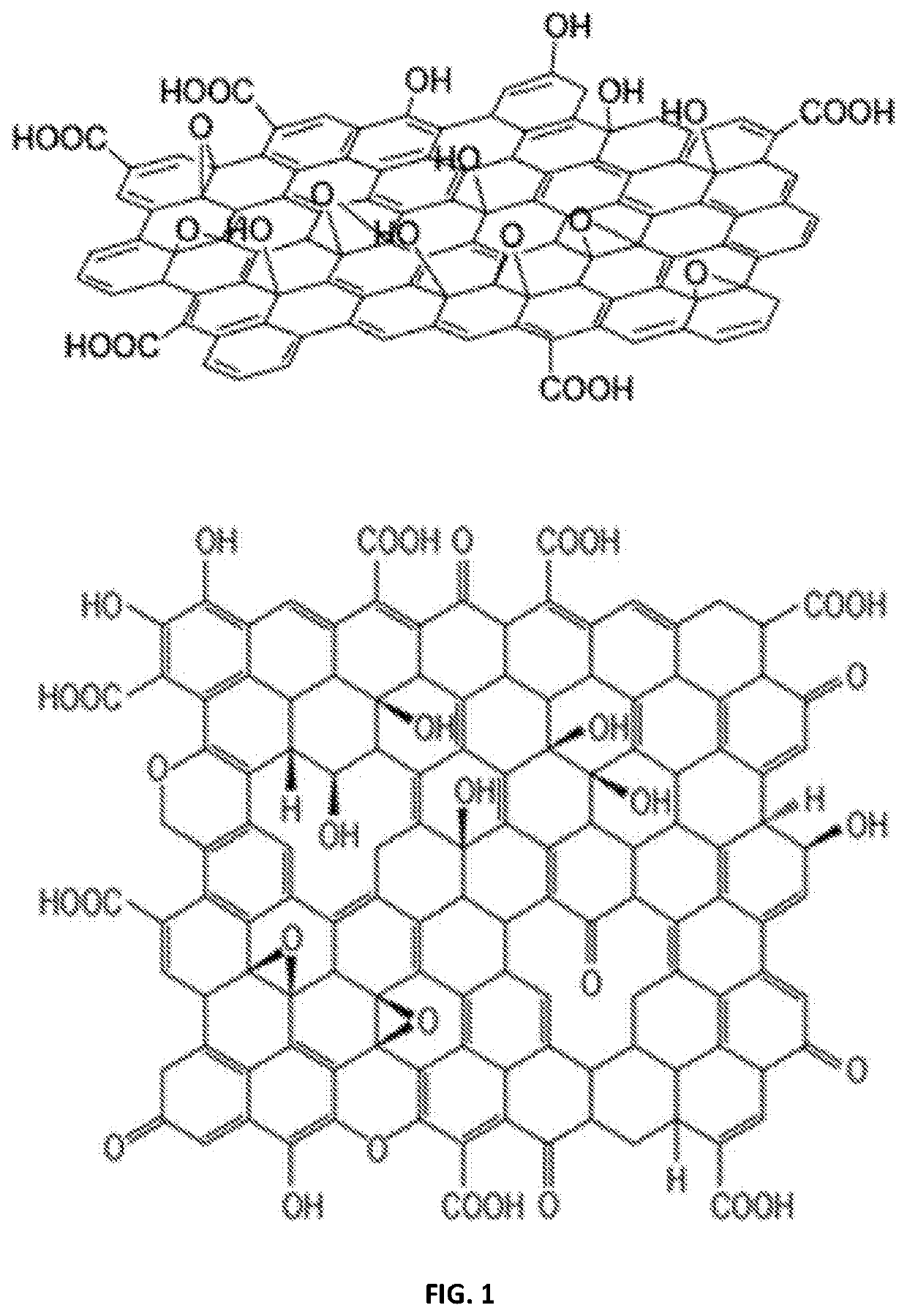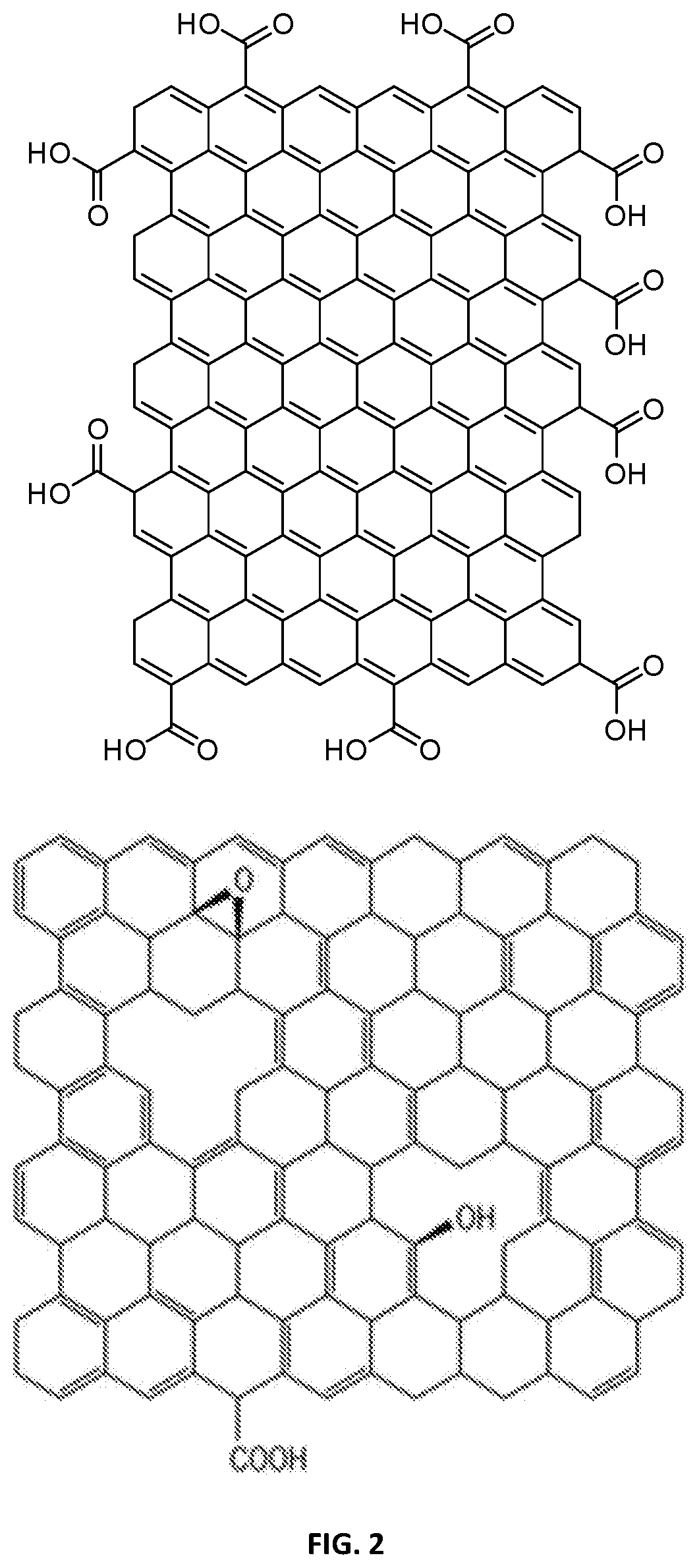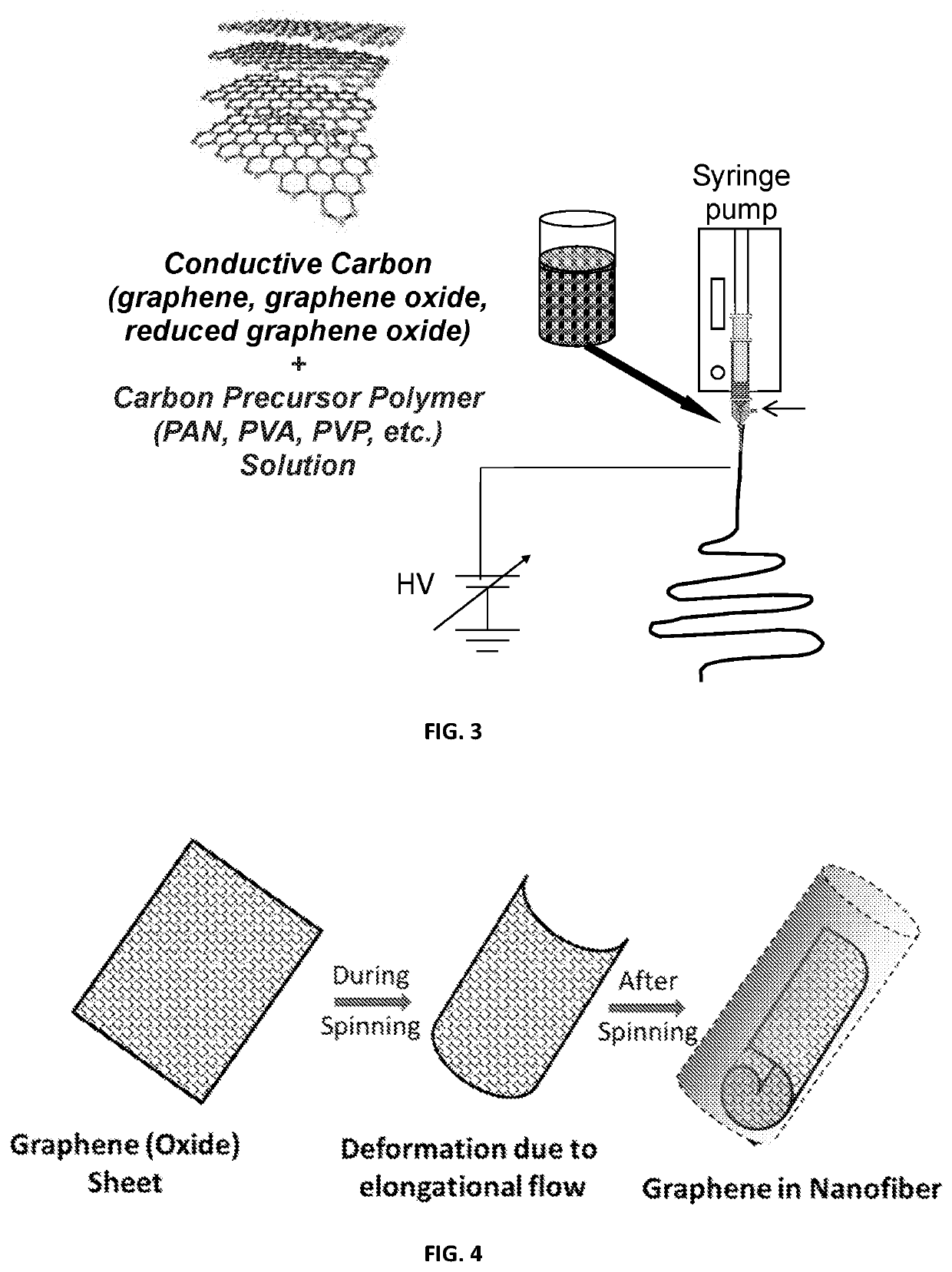Graphenic fibers, yarns, composites, and methods of making the same
a graphene fiber and composite technology, applied in the field of graphene fibers, yarns, composites, and methods of making the same, can solve the problems of little overall benefit, and achieve the effects of less brittleness, lower densities, and higher failure strain
- Summary
- Abstract
- Description
- Claims
- Application Information
AI Technical Summary
Benefits of technology
Problems solved by technology
Method used
Image
Examples
example 1
uid Stock
[0128]A first stock fraction is prepared by charging graphene oxide (0.75 wt. %), the graphenic component, into an aqueous medium. The suspension is stirred until homogeneous. A second fraction stock is prepared by charging polyvinyl alcohol (PVA) into an aqueous medium (de-ionized water) (0.1 g polymer / mL medium). The mixture is stirred until homogenous (dissolved).
[0129]The fluid stock having a GO:PVA weight ratio of 1:10 is prepared by combining the first and second stock fractions in the appropriate amounts and stirring until homogenous.
[0130]Additional fluid stocks are prepared as described above, with GO:PVA weight ratios of 1:5, 1:3, and 1:2.
example 2
inning GO / PVA
[0131]The fluid stock of Example 1 is electrospun by a gas-assisted technique. The overall process and apparatus is depicted in FIG. 1. The fluid stock is loaded into a syringe pump connected to a spinneret with an inner nozzle diameter (fluid stock) of 4.13×10−4 m and an outer (air) diameter of 1.194×10−3 m. The distance between the nozzle and the collector is about 15-20 cm and the fluid stock is spun at a rate of about 0.1-0.5 ml / min. A charge of about +15-25 kV is maintained at the collector. The air velocity at the nozzle is >5 m / s. The temperature of the air and fluid stock at the nozzle is about 300 K.
example 3
rns (Rotating Collector)
[0132]The (grounded) collector of Example 2 is in the shape of a cone, with the open end facing the electrospinning nozzle. A pair of nozzles are located on opposite sides of the collector, as illustrated in the FIG. 9. As the fluid stock is electrospun, a fibrous web or mat forms on and in proximity to the collector. As the collector rotates, the fibrous web twists to form a twisted yarn, which is drawn and collected on a spool, such as illustrated in FIG. 9.
PUM
| Property | Measurement | Unit |
|---|---|---|
| average length | aaaaa | aaaaa |
| length | aaaaa | aaaaa |
| width | aaaaa | aaaaa |
Abstract
Description
Claims
Application Information
 Login to View More
Login to View More - R&D
- Intellectual Property
- Life Sciences
- Materials
- Tech Scout
- Unparalleled Data Quality
- Higher Quality Content
- 60% Fewer Hallucinations
Browse by: Latest US Patents, China's latest patents, Technical Efficacy Thesaurus, Application Domain, Technology Topic, Popular Technical Reports.
© 2025 PatSnap. All rights reserved.Legal|Privacy policy|Modern Slavery Act Transparency Statement|Sitemap|About US| Contact US: help@patsnap.com



